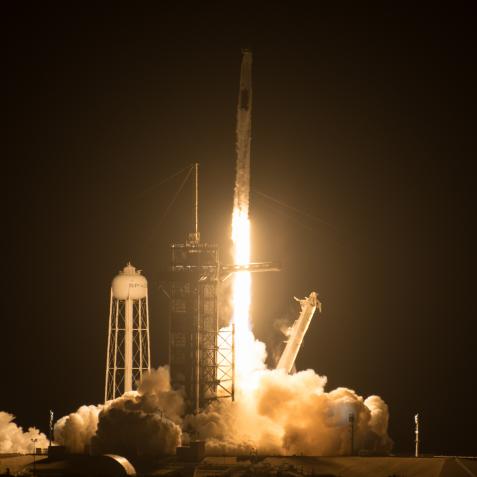
@virgingalactic/twitter
Virgin Galactic Failed to Launch because Space is Hard

This is the first test launch from Branson’s Virgin Galactic company since February of 2019, and follows a string of delays, cancellations, and aborts. What’s going on?
On Saturday, December 12, a test flight of billionaire Richard Branson’s SpaceShipTwo “Unity” launched from the desert sands of Spaceport America, New Mexico. Shortly after takeoff, the launch was aborted and Unity returned to Earth (safely, thankfully).
Space is hard, folks.
Here’s the deal. Branson first announced the idea for Virgin Galactic back in 2004 as a “space tourism” company. You buy a ticket, you hop in a rocket, you get to space and see Earth as the beautiful spinning globe of blue and green that it is, and you come back down.
It’s a pretty straightforward concept, all things considered (it’s not like he’s trying to take people to Mars or anything). But when it comes to space, even the simple things can be frustratingly hard.
How hard?
When the company was announced in 2004, the first tourist was slated to launch in 2009. That’s… slipped a bit. And on a test flight in 2014, Virgin Galactic’s “Enterprise” spaceship broke up in the atmosphere, killing one of the astronauts on board and seriously injuring the other. I don’t blame Branson’s company for being exceedingly cautious after that incident. And if the entire point of your company is to take people up for a joyride into space safely then you can’t afford another accident, fatal or otherwise.
One of the troubles that Virgin Galactic is facing is their non-traditional rocket design. Most rockets are long skinny affairs, composed of several sections. The first section (called “stage” in the lingo of liftoffs) gets the rocket off the ground. Once it has expended its fuel, it detaches so that the rest of the rocket doesn’t have to lug that deadweight around. Then there’s another section, and sometimes another, and even sometimes another (for the really heavy stuff).
But instead, Virgin Galactic’s rockets are launched from the underbelly of a specially designed airplane. That airplane takes it up to 40,000 feet before liftoff (lift away?). With the plane doing a good chunk of the work fighting gravity, the rockets can be much smaller and nimbler, allowing them to glide back down to Earth and land, ready for another run.
Since we don’t have a lot of experience launching rockets this way, it’s taking a lot of development time to get it right.
But even then, Virgin Galactic will be largely limited to space tourism. For a mere quarter of a million bucks, you too can get up above the Karman line (62 miles above the ground, the “official” beginning of space). But you won’t spend long in weightless wonder: Branson’s spaceships don’t have the oomph to achieve full orbit.
We really don’t know if Virgin Galactic will take off or if it will ever sell enough tickets to recoup its initial investment (which is very much over budget). A spinoff company, Virgin Orbit, hopes to launch cargo like small satellites, but it too is facing cost overruns and massive delays.
Like I said, space is hard.






















